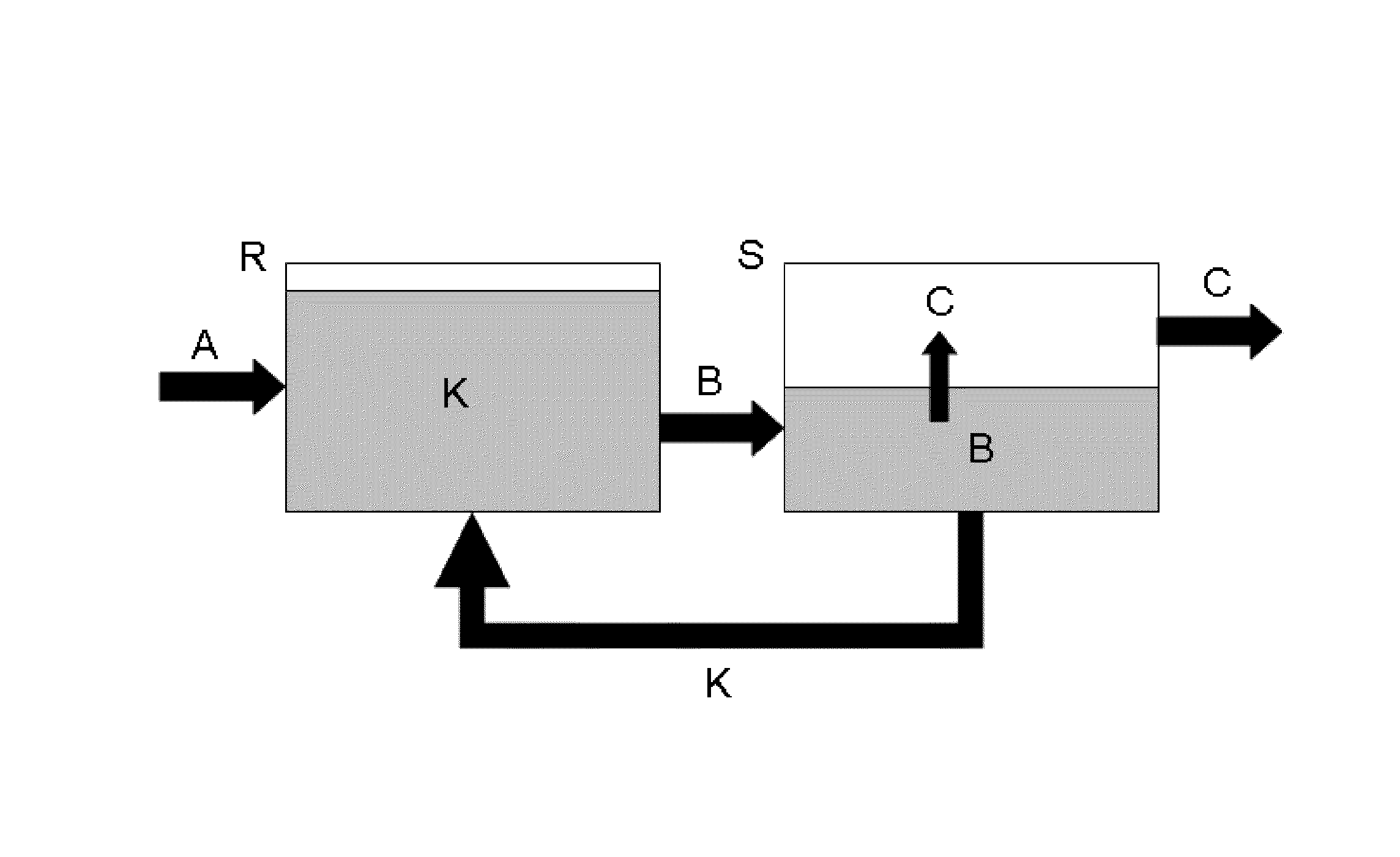Method for producing diphenylcarbonate having catalyst comprising ionic fluids
a technology of diphenylcarbonate and ionic fluid, which is applied in the preparation of carbon monoxide and oxygen, organic compound/hydride/coordination complex catalyst, physical/chemical process catalyst, etc., can solve the problems of reducing the activity of the catalyst in the reaction mixture, reducing the yield of the catalyst, and reducing the catalyst's activity. / or not economically feasible, etc., to achieve the effect of high yield, simple and economically advantageous manner, and high selectivity
- Summary
- Abstract
- Description
- Claims
- Application Information
AI Technical Summary
Benefits of technology
Problems solved by technology
Method used
Image
Examples
example 1
Catalyst Composition According to the Invention
[0050]A first catalyst composition according to the invention consisting of 0.19 g of PdBr2, 1.9 g of manganese(III) acetylacetonate, 1.8 g of sodium phenoxide and 3.0 g of 1-butyl-3-methylpyrrolidinium trifluoroacetate (Fluka) and 9 g of molecular sieves 3A (pore size: 3 Ångström; Fluka) was obtained by weighing the individual constituents into a glass beaker.
example 2
Catalyst Composition According to the Invention
[0051]A second catalyst composition according to the invention identical to that of Example 1 except that 3.0 g of 1-butyl-3-methylimidazolium hexafluorophosphate (Fluka) were weighed out instead of 3.0 g of 1-butyl-3-methylpyrrolidinium trifluoroacetate was obtained by weighing the individual constituents into a glass beaker.
example 3
Catalyst Composition According to the Invention
[0052]A third catalyst composition according to the invention consisting of 0.019 g of PdBr2, 0.19 g of manganese(III) acetylacetonate, 0.18 g of sodium phenoxide and a mixture of 0.15 g of 1-butyl-3-methylpyrrolidinium tetrafluoroacetate (Fluka) and 0.15 g of 1-butyl-3-methylimidazolium hexafluorophosphate (Fluka) and 1 g of molecular sieves 3A (pore size: 3 Ångström; Fluka) was obtained by weighing the individual constituents into a glass beaker.
PUM
| Property | Measurement | Unit |
|---|---|---|
| temperature | aaaaa | aaaaa |
| pressure | aaaaa | aaaaa |
| temperature | aaaaa | aaaaa |
Abstract
Description
Claims
Application Information
 Login to View More
Login to View More - R&D
- Intellectual Property
- Life Sciences
- Materials
- Tech Scout
- Unparalleled Data Quality
- Higher Quality Content
- 60% Fewer Hallucinations
Browse by: Latest US Patents, China's latest patents, Technical Efficacy Thesaurus, Application Domain, Technology Topic, Popular Technical Reports.
© 2025 PatSnap. All rights reserved.Legal|Privacy policy|Modern Slavery Act Transparency Statement|Sitemap|About US| Contact US: help@patsnap.com


